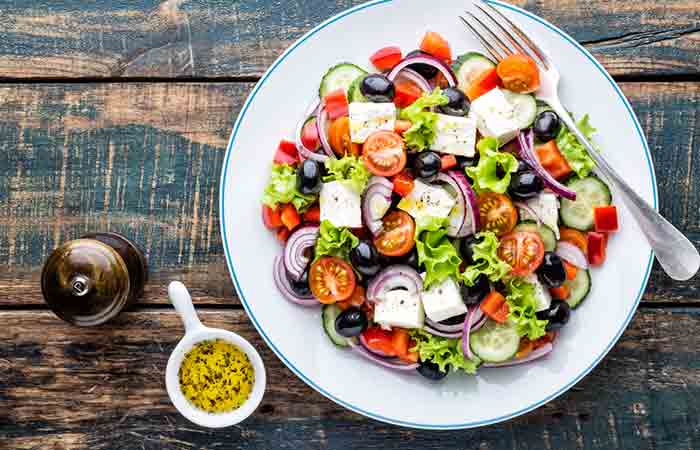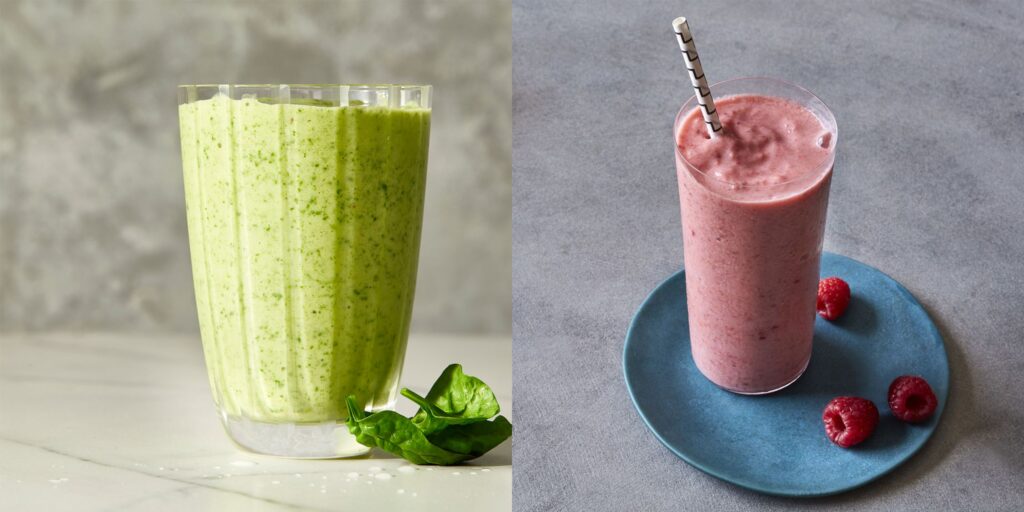The ketogenic diet is a low-carb, high-fat diet that’s becoming popular with more and more people.
While cutting carbs and eating lots of fat may sound strange at first, a growing body of research shows that keto can be great for you.
People who follow a keto diet enjoy various health benefits, including weight loss, lower risk of heart disease, higher energy levels, and better mental clarity.
Keto is an excellent way to eat, but it can be confusing at first. So, what are the biggest keto mistakes most people make when they start?
If you’re new to keto, this article will help. It covers how to avoid the seven biggest mistakes beginners make on a keto diet to make sure you succeed with keto right out of the gate. Let’s get started with common mistake number one.
1. Not Counting Net Carbs
If you want to succeed on keto, you have to track your carb intake until you get a feel for how many carbs you should be eating each day. Our Perfect Keto macronutrient calculator will tell you exactly how many grams of fat, protein, and carbohydrates to have each day.
When you cut down on carbs, your body will shift into ketosis — you begin to burn fat as your main fuel source instead of sugar.
Ketosis is responsible for the health benefits of a keto diet, but this metabolic switch only happens when you limit your carb intake. The first step to a keto diet is figuring out how many carbs you should eat.
Get in the habit of checking the nutrition facts of your food. You want to count net carbs — total carbs minus fiber.
Keep your net carbs below about 50 grams per day, or follow the numbers in the macronutrient calculator. That should make sure you get into ketosis and start enjoying the many benefits a keto diet offers.
2. Ignoring Calorie Intake
Many people have amazing weight loss results with a keto diet, which makes sense.
When you’re in ketosis, you burn about 300 extra calories a day[*]. Keto also suppresses your appetite, making it easier to eat less and still feel satisfied.
You feel full on less food on keto, and you’re burning more calories each day.
That’s a great recipe for weight loss, and it probably explains why so many people see success with keto that they haven’t had with other diets. On keto, you don’t have to be hungry all the time to lose weight.
However, if lower body weight is your goal with keto, you can’t ignore calories entirely. Weight gain is very much possible, even when you’re in ketosis. It’s a lot harder to overeat and a lot easier to stay in a calorie deficit.
You don’t necessarily have to count calories on keto. Several studies had found that people spontaneously lost weight when they switched to a keto diet, even when researchers told them to eat until they were satisfied.
That said, you should still pay attention to your hunger on keto. Only eat until you’re full, and if you aren’t seeing the weight loss results you want after a couple of months of keto, consider counting calories until you begin to lose weight.
3) Not Preparing For Keto Flu
You’ve been burning carbs for most of your life, so your body can get confused when you suddenly cut carbs out.
It takes a week or so to get used to burning fat for fuel instead of carbs. Keto dieters call this period the “keto flu” — you may experience a few days of flu-like symptoms while your body adjusts to using fat as an energy source.
Side effects of keto flu include:
- Fatigue
- Low energy
- Trouble focusing
- Headaches
- Achy muscles
If you experience any of these symptoms during your first week on keto, don’t worry! It’s completely normal, and it’ll pass pretty quickly.
There’s also plenty you can do to relieve keto flu. Even basic things like getting enough sleep and drinking plenty of water make a big difference during the keto flu period.
Check out this guide to keto flu and how to get rid of it. It has simple, actionable steps you can take to smooth over your transition into ketosis.
4) Not Getting Enough Salt
You’ve probably heard that eating too much salt causes high blood pressure and that it’s healthy to limit your sodium intake.
That may be true on higher-carb diets, but your sodium balance works a bit differently on keto.
When you eat carbs, your digestion converts them to sugar. They get into your bloodstream and increase your blood sugar levels, and you produce insulin to bring your blood sugar back down. You also store sodium in your kidneys to help you process carbs and sugar.
Your blood sugar stays stable and low on keto because you aren’t eating carbs. As a result, you release very little insulin.
When you don’t release insulin, your kidneys expel sodium instead of holding onto it.
That means you don’t have to worry about eating a lot of salt on a low-carb diet. You won’t store it the same way, and it’s much less likely to affect your blood pressure.
You want to get a lot of salt on a keto diet, especially when first starting.
It takes a lot of water to store carbohydrates, and as you transition into keto, you burn through your carb stores, releasing water as they deplete. Most people lose between 3-10 pounds of water weight during the first couple of weeks of keto.
When you flush out that water, it takes a lot of sodium, which can leave you dehydrated and contribute to the headache and fatigue that comes with keto flu.
So feel free to salt your food as much as you want on keto. Make sure you get plenty of salt — you’ll feel better for it.
5) Not Drinking Enough Water
As you read a moment ago, it’s normal to lose several pounds of water weight during your body’s transition into ketosis. You’re burning through your carb stores and releasing the water you need to store them.
You want to ensure you’re replenishing that water. Otherwise, you’ll get dehydrated. So during the first few weeks of keto, pay extra attention to the amount of water you drink.
Prioritize staying hydrated — it’ll help with keto flu and make you feel better overall.
6) Forgetting To Eat Veggies
One of the best parts of keto is all the delicious food you can eat. A ketogenic diet is allowed for steak, bacon, butter, cheese, cream, and olive oil.
With so many tasty options, it’s easy to forget your vegetables. Any nutritionist will tell you that greens are amazing for you, and getting your veggies is as important as ever on a ketogenic diet.
Fortunately, there are plenty of micronutrient-packed, low-carb veggies to choose from. Good choices include (but are certainly not limited to):
- Avocado
- Cabbage
- Broccoli
- Cauliflower
- Olives
- Fennel
- Bell peppers
- Hot peppers (jalapeno, Fresno, etc.)
- Spaghetti squash
- Kale
- Collard greens
And plenty of other vegetables. Just check the carb count on the veggies you eat — some of them have hidden carbs you wouldn’t expect to be there.
7) Snacking On Too Many Processed Foods
As keto becomes more popular, many sugar-free, low-carb snacks are hitting the market. Many of them are keto-friendly.
But just because these snacks are low-carb doesn’t mean they’re great for you. Many of them have artificial sweeteners and flavorings, sugar alcohols that are hard on your digestion, and nutritionally empty ingredients.
To see the biggest health gains on keto, prioritize lots of healthy fats and high-protein whole foods.
Keto snacks are just fine in moderation. They’re great for traveling or times when you aren’t sure if you’ll have other keto food options. We make Perfect Keto bars (which are also exceptionally nutrient-dense and free of junk ingredients).
But if you wake up one Sunday and realize you spent most of the week eating keto gummy bears, pork rinds, hot dogs, and low-carb ice cream, it’s time to reevaluate your diet. You probably aren’t getting what your body needs.
We’ve got you covered if you aren’t sure what to eat! This free 7-day keto diet plan has delicious and varied keto recipes for every week’s meal.
And, of course, you can sneak a few ketos treats in here and there. They’re tasty, and having them now and then won’t hurt you.
Final Thoughts On Keto Diet Mistakes
It can be intimidating to start keto, but it’s pretty simple. Cut way back on carbs, replace them with enough fat, meat, and veggies that you feel satisfied, drink plenty of water, and enjoy yourself.
If you’re not sure where to start, check out our guide to the keto diet for beginners, or jump right in with a complete keto meal plan. Give keto a try and see how you feel.


